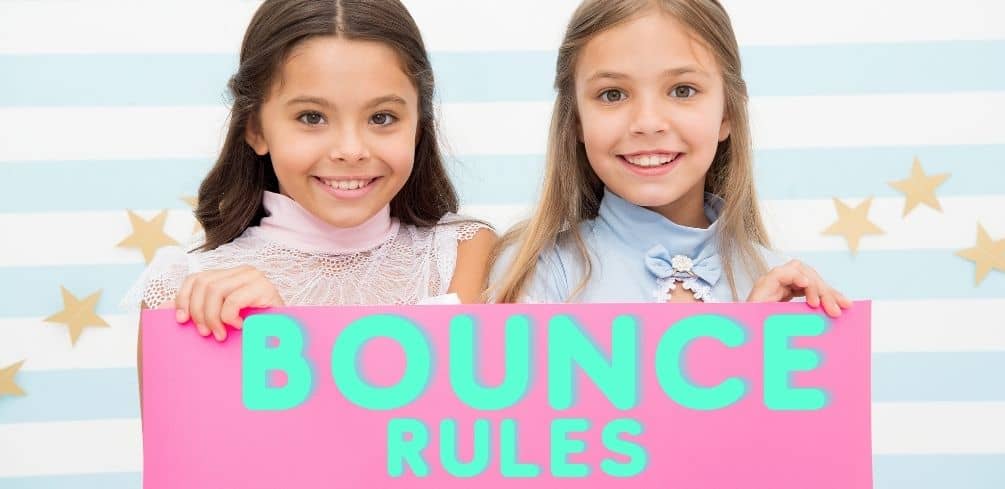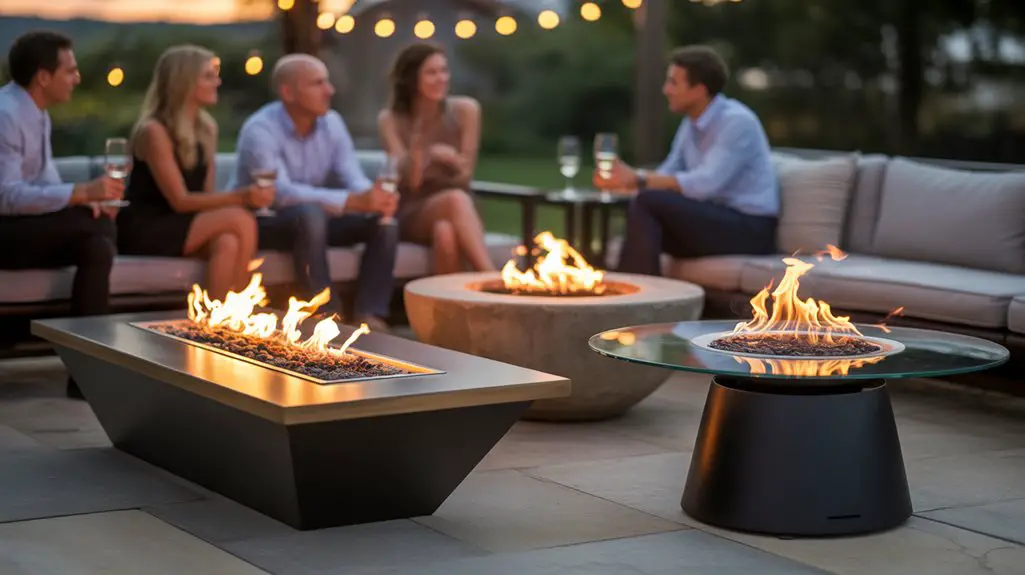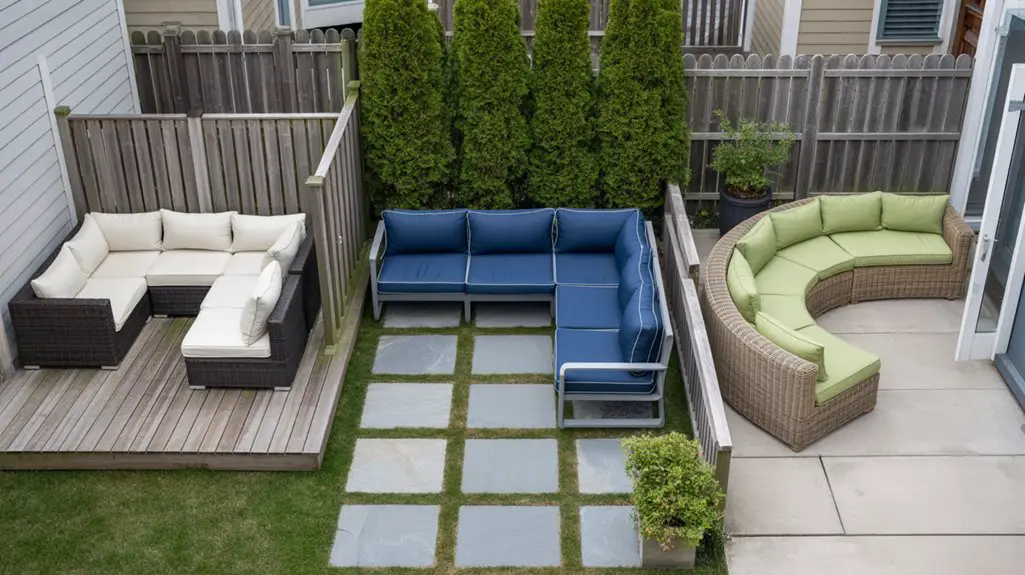Although fun, exciting, and entertaining for kids at parties or gatherings, bounce houses also demand safety usage. Parents and guardians constantly seek ways to ensure their kids stay productive and energetic while maintaining basic safety rules.
As such, this article comprehensively compiles all the bounce house safety rules to keep kids entertained within the boundaries of safety.
Bounce house rules of safety include:
- Ensure constant supervision
- Shoes are not allowed, socks are required
- Kids Under 6 Years Should Avoid Bounce Houses
- Limit the number of kids occupying a bounce house
- Ensure the bounce house is appropriately sized for your kids
- The bounce house should be located in an open, flat ground
- Ban prohibited items
- Ensure proper bounce house setup
- Check bounce house for registration, insurance, and legality
- Be mindful of the weather
- Pets are sometimes not allowed
- Check if bounce house works with water
Looking for a Bounce House
Here is a list of our recommendations for the Best Indoor Bounce Houses and Best Commercial Bounce Houses.
Ensure Constant Supervision
Kids are naturally curious and cheeky. It is not uncommon to find kids experimenting with different ideas that put them and others at great risk.
The number one bounce house safety rule is to ensure constant supervision to limit such instances.
A bounce house should have at least one grown-up or parent supervising the kids’ play. The supervisor should be watchful at all times and minimize distractions.
In addition, the supervising adult should have a clear view of what is going on inside the bounce house.
Bonus points if you have a supervisor who is well-trained in providing first aid. This comes in handy in the event of injuries since kids constantly put themselves in danger unintentionally.
Having basic first aid administering skills should be a requirement for supervising adults.
Generally, the bigger the bounce house, the more supervising adults are required to provide balanced supervision. Additionally, the supervisor should keenly monitor and restrict certain activities.
Bounce houses are designed for bouncing and jumping. Some activities such as horseplay, flips, somersaults, and various roughhousing can cause kids’ injuries.
Shoes Are Prohibited in Bounce Houses
Shoes, among other items, are not allowed in a bounce house. A significant concern is that shoes often can damage a bounce house, depending on the shoe type.
In addition, shoes hurt kids’ feet when landing on them.
Some kids have an unexpected natural behavior of hurtling objects at others. Therefore, allowing such kids into a bounce house turns them into a safety hazard and a danger to other kids.
Additionally, shoes track in rocks and dirt, which compromises the integrity of the bounce house and exposes the kids to dirt-causing illnesses. For these reasons, shoes are safety hazards and should be left at the entryway before climbing into the bounce house.
Ensure the kids wear socks at all times while in the bounce house.
Kids Under 6 Are Not Allowed in Bounce Houses
As unfair as it sounds, only kids aged 6 and above can use a bounce house. This is because younger kids lack the strength, balance, and coordination to enjoy the bounce house.
What is the maximum age for using a bounce house?
Generally, bounce houses are safe for kids aged between 6 and 13. Younger kids may get knocked down and hurt by other kids jumping.
On the other hand, older kids may play roughly and cause injuries to younger kids in the bounce house.
However, the best way to avoid kids feeling left out is to group them agewise. Group kids together according to age and, if applicable, size-wise.
Oversized kids don’t often play well will small-bodied kids, regardless of them belonging to the same age group. Ensure you are constantly supervising their play to minimize accidents.
Other groups of people generally not allowed or limited from accessing bounce houses include people with health impairments, joint/bone problems, back/problems, high blood pressure, and any condition that may cause further complications.
Limit the Number of Kids in the Bounce House
The average bounce house has a relatively low and limited capacity. Therefore, as a general rule, you should allow one child at a time in the bounce house.
Regardless, some kids may want to play together, which warrants constant supervision.
Depending on the bounce house size, you can limit the number of kids to two to five kids at a go. A large bounce house can accommodate more than that.
Ensure you check the recommended maximum capacity before allowing the kids in.
In addition, you might as well consider renting or acquiring an inflatable obstacle course for older kids who are getting too large or many for a standard bounce house.
Get An Appropriately Sized Bounce House
The number and size of kids attending your kid events should determine how large a bounce house you should acquire or how many you should acquire. The smaller the bounce house, the smaller the capacity.
Fortunately, there are bounce houses for different ages. These bounce houses are sized differently to match different ages.
However, as previously mentioned, you may want to group kids together according to sizes, especially if you have a standard-sized bounce house.
The Bounce House Should Be Located On A Flat, Open Surface
Bounce houses have different location requirements for placement and installation to ensure proper operation. The standard large inflatable bouncing house needs an open and flat space with vertical and horizontal clearance.
When setting up the bouncing house, ensure there are no distracting, low-hanging tree branches around. Also, check for power lines or any potential hazards within the inflatable’s vicinity.
Typical location requirements include a flat surface such as a yard or even a driveway, provided there are nearby structures or installations where you can tie down the bounce house. Additionally, ensure the bounce house’s open face is open and protected.
It should be open if a child suffers an injury and wants a quick, easy exit from the bounce house. In addition, the open face should be protected and facing away from potential hazards such as a nearby busy road, rocks, or swimming pool.
Ban Prohibited Items in the Bounce House
There are several items generally prohibited from going inside a bounce house. Some of the things to watch out for when allowing kids into a bounce house include:
• Sharp objects. Sharp items are safety hazards to kids and may damage or compromise the bounce house’s integrity. Unfortunately, a damaged bounce house may result in worse situations and injuries
• Jewelry. Jewelry pieces can harm a kid, especially if they get stuck or caught on an object inside the inflatable. A piece of necklace can choke a child, and earrings can pierce or tear their skin. In addition, a sharp piece of jewelry can damage the bounce house. Also, ban glasses since they can break and hurt the kids
• Hard objects like toys. Ban anything that can hurt the kids if landed on. Such typically include figurines, dart guns, dolls, and select toys
• Foods and drinks. Spilled foods and drinks cause a slippage hazard. Moreover, food and drink spillages add the extra strain of cleaning needed, which may put you and the inflatable renting company in a disagreement. In addition, food is a choking hazard.
The supervising adult should conduct a thorough search on the kids to ensure non of these banned items get inside the inflatable. Unfortunately, kids tend to be a little naughty and cheeky.
Therefore, ensure you conduct a thorough search to avoid them sneaking in banned items.
Ensure Proper Bounce House Setup
Setup difficulty levels vary depending on the type of bounce house. Bigger bounce houses tend to be harder to install than small and less complex ones.
Therefore, regardless of the size you choose, ensure you hire an expert to properly set up the inflatable. A licensed expert ensures the inflatable is appropriately set up, tied down, and safe for usage.
If you are buying your own bounce house, you may also want to learn how to set up the inflatable properly independently. Ensure you read through the installation guide thoroughly if it is your first time setting up a bounce house.
Check for Legality, Insurance, and, Registration
Safety, just like anything else, is also regulated. Generally, inflatables have specific laws at different levels, from the municipal to the state level.
These laws govern the setup and usage of these inflatables. Most of these laws apply to inflatables manufacturers and rental companies. However, some of these laws apply to individuals using them.
Consult an expert or a local city rep to help you understand any specific laws and regulations surrounding bounce houses, especially since these laws and regulations vary from state to state. In addition, if you are acquiring an inflatable from a rental company, ensure the company is registered and insured.
Be Mindful of the Weather
Bounce houses are essentially inflatables that don’t do well with extreme weather like sunny hot days. During hot days, ensure you shade your bounce house or moisten it.
Exposed bounce house surfaces can get very hot, which exposes them to burn risks.
On the other hand, not all bounce houses are designed to be wet. In addition, bounce houses are exposed to the risks of high winds and storms.
Avoid using the inflatable during excessively windy days, minimum of 20 MPH. Therefore, check with the manufacturer or rental company if the inflatable is susceptible to damage from extreme weather.
Also, ensure no one is playing in the bounce house in such extreme weather. Finally, ensure you deflate your bounce house when no one uses it since high winds can hurl the inflatable into someone and cause injuries.
Pets Are Not Allowed
Depending on the rental company you hire the bounce house from, pets may or may not be allowed. Some pets with sharp claws, like cats, can scratch bounce house surfaces.
In addition, allowing pets in the bounce house to play with kids expose them to injuries. Depending on the rental company’s rules, pets can also litter the bounce house, which may attract extra cleaning fees.
Regulate Water Usage
Inflatables can either allow water usage or not. Water can add an element of fun for inflatables, depending on the inflatable type.
However, general bounce house rules require that an inflatable should be dried entirely before deflation and storage.
Ensure you consult the rental company or manufacturer to determine if water is allowed on the bounce house. Some bounce houses cause a safety hazard when wet by causing a slippage effect.
Bounce House Setup Rules
Indoor Setup Rules
• Set up the bounce wall a reasonable distance from any wall. Ensure there are sufficient open spaces around the bounce house
• Place a soft cushioning object or surface around the bounce house’s exit and entrance, especially if you set up the bounce house in a room with rough surfaces and floors.
Outdoor Setup Rules
• Ensure you place the bounce on flat, open ground. The area should be free of thorns, sticks, rocks, or objects sticking up from the surfaces like sprinklers
• Place a soft surface around the exit and entrance of the bounce house if it is located on a hard surface
• Ensure you set up the bounce house far from hanging tree branches, fences, or power lines. Moreover, ensure there are sufficient open spaces around the bounce house
• Additionally, ensure you anchor the bounce house with long metal stakes driven into the surface
• Once the rental company sets up the bounce house, avoid moving the equipment. This increases the risk of injuries and accidents. It also avoids the rental company’s insurance.
• Make sure to set it up close to the house if you need to plug it in otherwise you will need a generator to power the bounce house air blowers.
Setup maintenance
It’s important to be prepared if a bounce house springs a leak so you can quickly fix it and get back to the fun.
Bottom Line
The bounce house is fun, stimulating, and exciting. However, if not used properly, it becomes a safety hazard.
One of the most commonly practiced bounce house rules is ensuring constant adult supervision. Supervision reduces the risks of injuries and damages typical in bounce house inflatables.
Ensure you also rent the inflatable from a certified and insured rental company. If you are buying one, take time to learn how to set it up and all the relevant safety rules.
Most importantly, consult the manufacturer or rental company if there are any house bounce rules you should abide by. Next, let’s check out the average rental cost of a Bounce Castle.
Please be careful and use at your own risk
None of the authors, contributors, administrators, or anyone else connected with BestPlaygroundSets, in any way whatsoever, can be responsible for your use of the information contained in or linked from these web pages.




